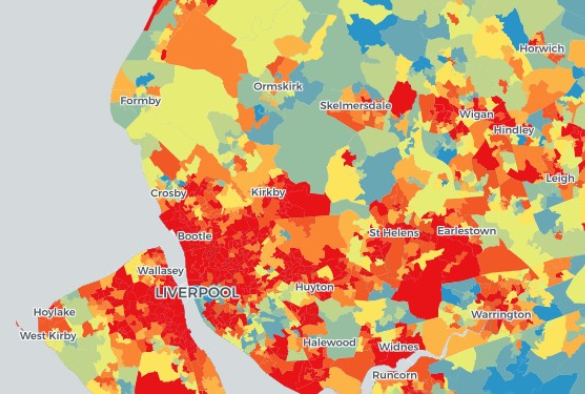
A data modelling tool developed by University of Liverpool researchers is being used at a local, regional and national level to provide intelligence on the impact of COVID-19 on local communities.
During the first wave of the COVID-19 pandemic in England, several population characteristics were associated with an increased risk of death from the virus, including age, ethnicity, income, deprivation, care home residence and housing conditions.
Public health agencies wanted to understand how these vulnerability factors were distributed across their communities.
To address this need, researchers from University’s Institute of Population Health and the National Institute for Health Research Applied Research Collaboration North West Coast (NIHR ARC NWC) analysed 6,789 small areas in England and assessed the association between COVID-19 mortality in each area and the five vulnerability measures. They developed a Small Area Vulnerability Index (SAVI) modelling tool, which forecasts the vulnerability of the local population to the virus.
The analysis, published in the Journal of Epidemiology and Community Health, identified noticeably higher levels of vulnerability to COVID-19 clustered within specific communities in the North West, West Midlands and North East regions.
Nationally, the UK government has already used the SAVI tool in its work on identifying the damage done to communities by the impact of COVID-19. Regionally Lancashire County Council, Durham Council and the Merseyside Resilience Forum have used the SAVI tool for planning their response to COVID-19.
The SAVI tool uses an existing resource data developed by NIHR ARC NWC, which tracks changes in health and health outcomes by neighbourhood, for example hospital admissions data and prescribing data.
Dr Konstantinos Daras, who led the research, said: “The members of our collaboration were implementing control measures and policies to shield certain groups, and they needed evidence to take into account before targeting such actions so that they are proportionate to the greater needs experienced by some communities.”
“Our partners also want analysis of these local health interventions and access to the social and economic datasets of the local population during their implementation. Where new service interventions have been implemented, the ability to match those areas to non-intervention areas, selected from across England, is particularly beneficial to service providers and that is what the SAVI enables.”
Professor Mark Gabbay, Director NIHR ARC NWC, said: “This tool is already being used at a local, regional and national level to provide intelligence on the impact of COVID-19 on our communities while also helping with the implementation of new measures as we continue to battle the pandemic.”
This story is adapted from an original NIHR ARC NWC news article.
Research reference:
Daras K, Alexiou A, Rose TC, et al How does vulnerability to COVID-19 vary between communities in England? Developing a Small Area Vulnerability Index (SAVI)J Epidemiol Community Health. doi: 10.1136/jech-2020-215227